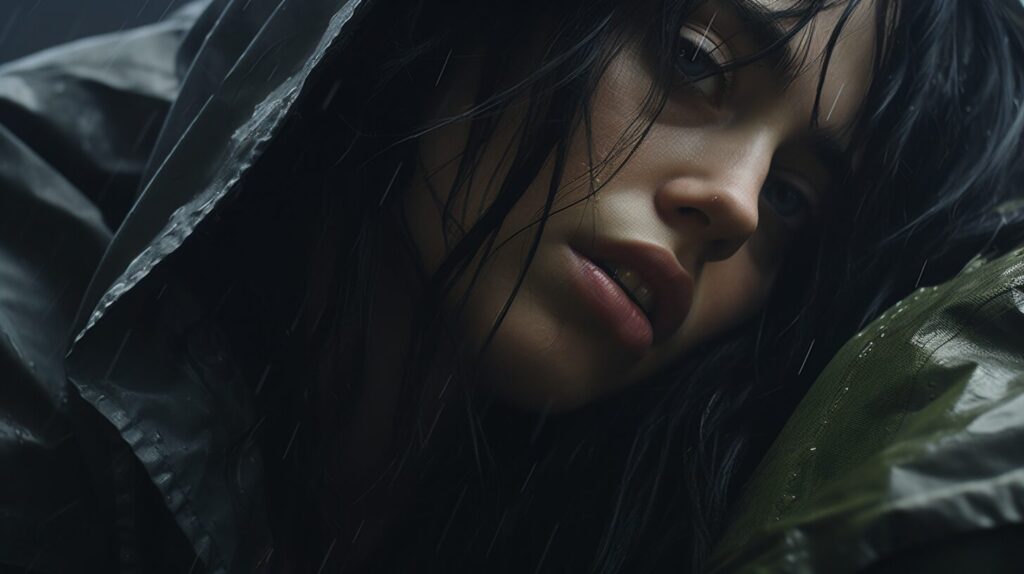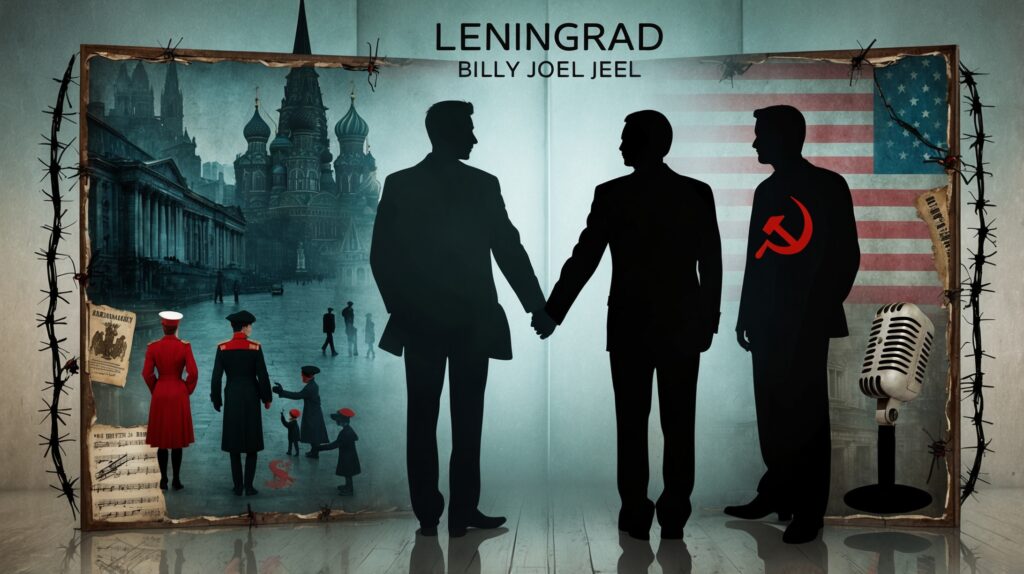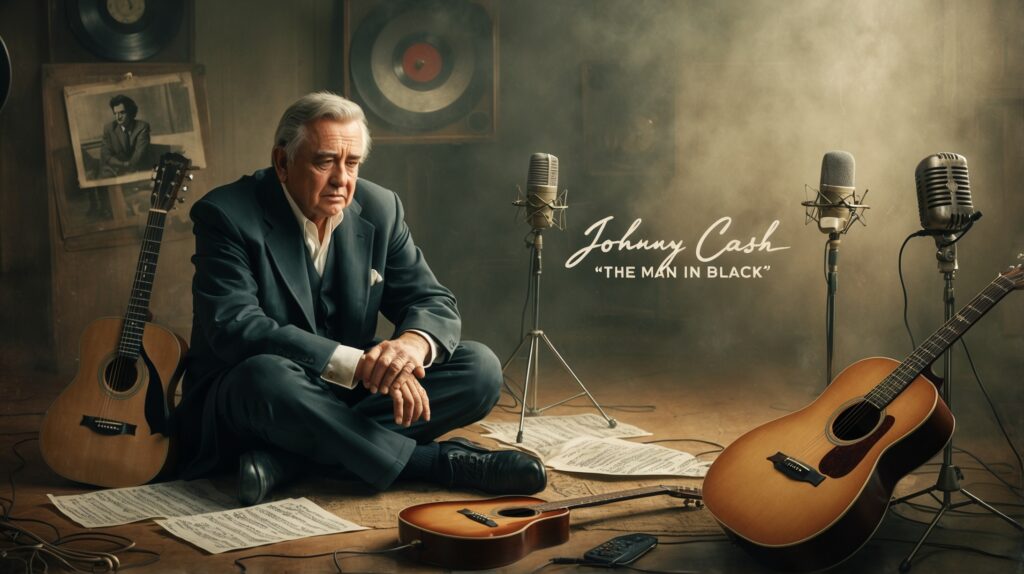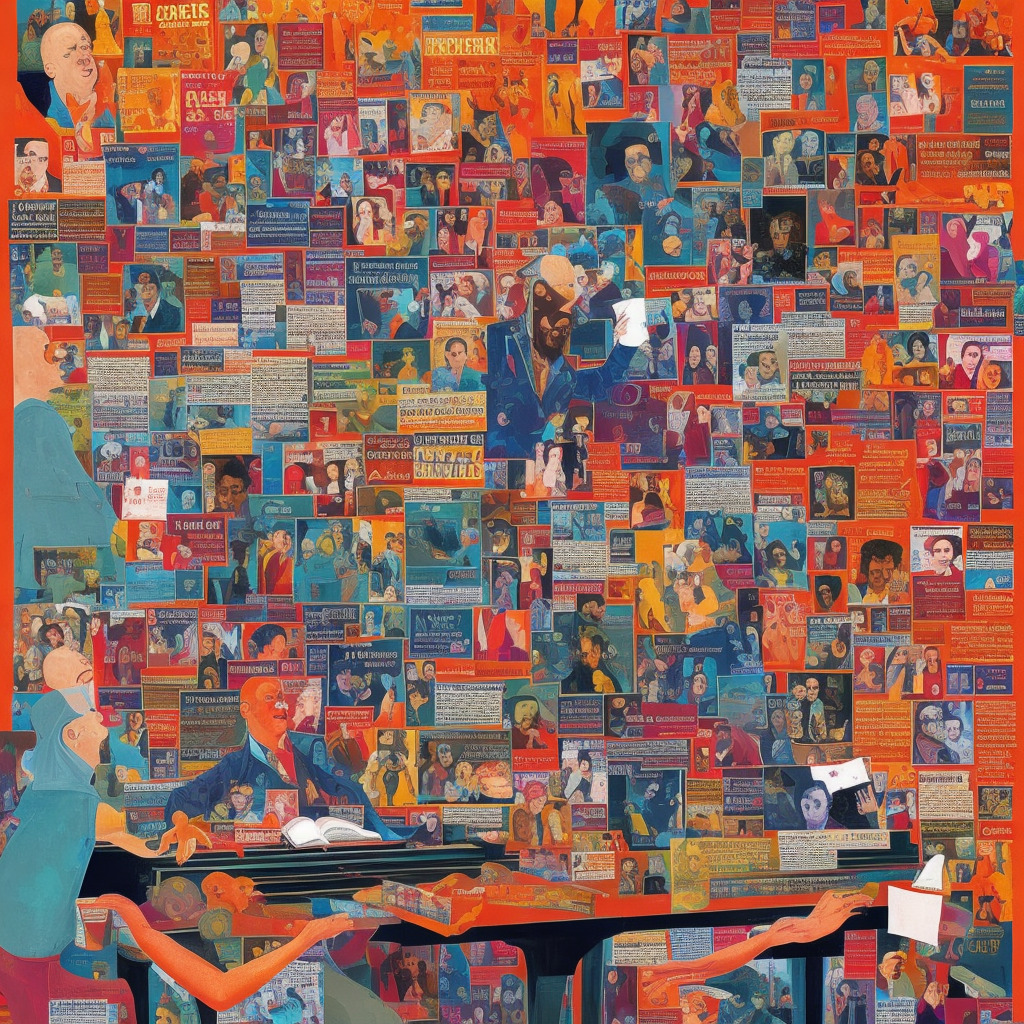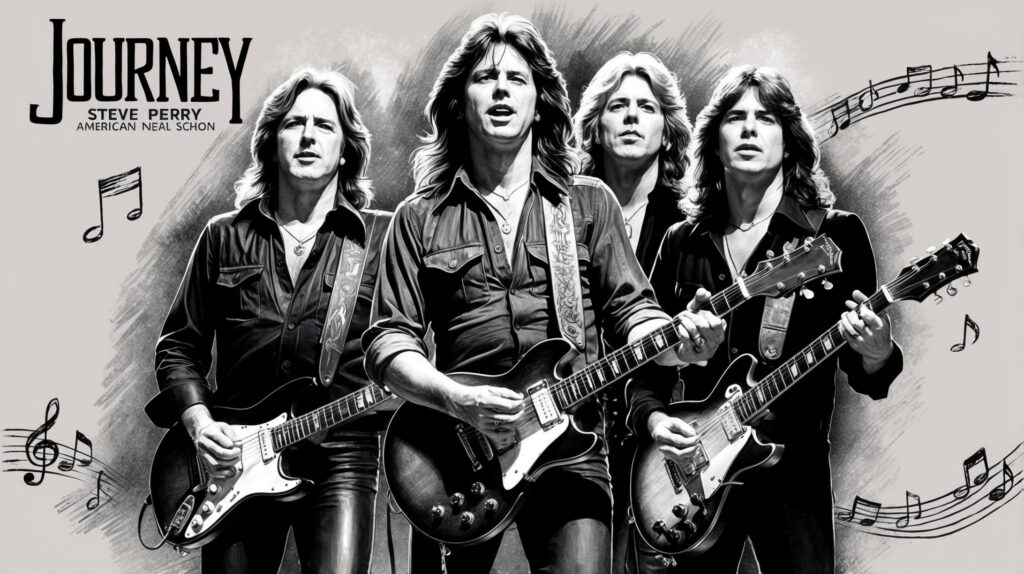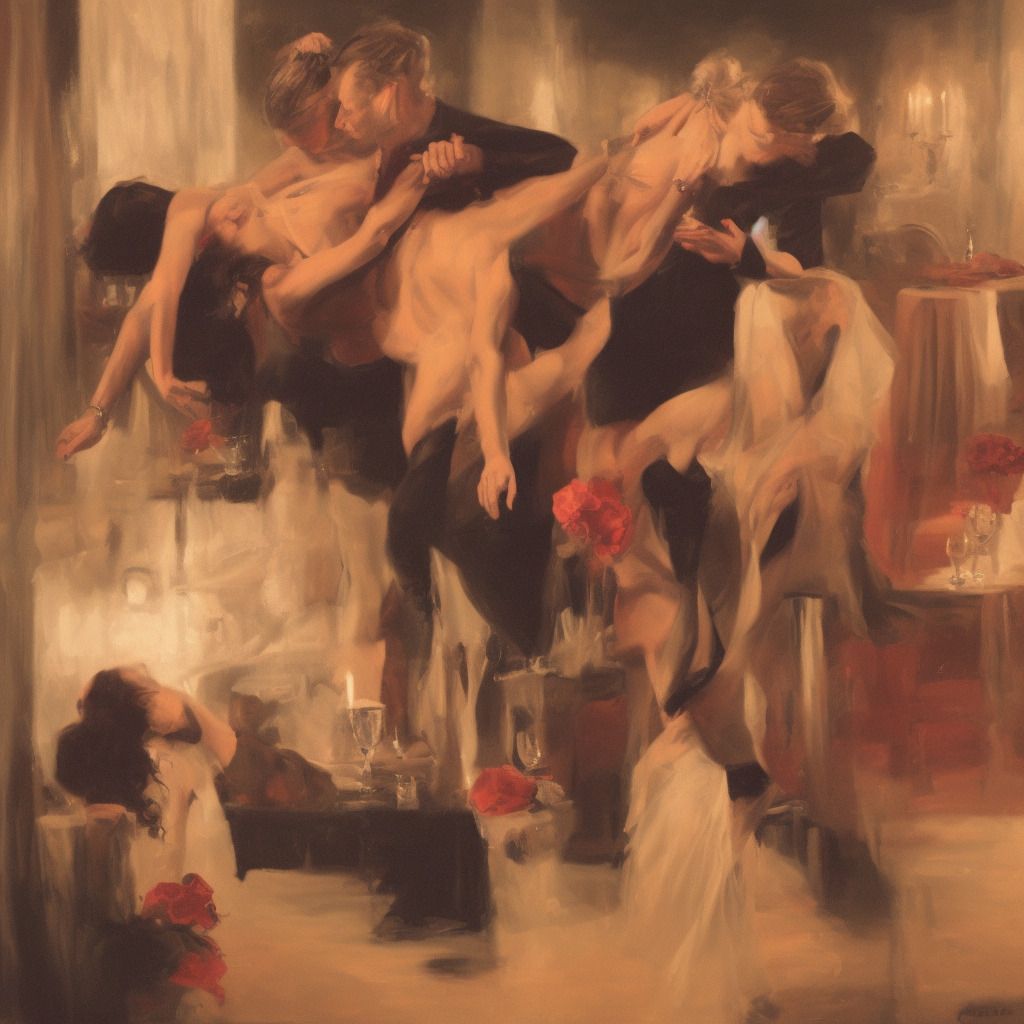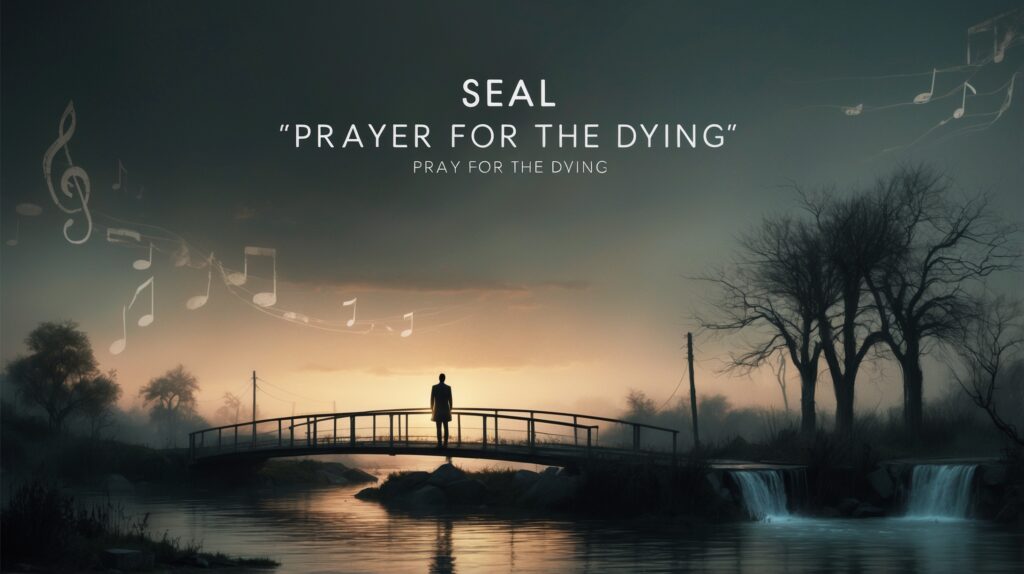In the ever-evolving tapestry of modern pop music, few songs have sparked as much intrigue and discussion as Billie Eilish’s “Bad Guy.” Released as part of her groundbreaking debut album, “When We All Fall Asleep, Where Do We Go?”, the track stands as a bold declaration of artistic independence and a departure from conventional pop narratives. With its pulsating bass, whispery vocals, and subversive lyrics, “Bad Guy” not only catapulted Eilish to international stardom but also challenged listeners to rethink the boundaries of what pop music can be.
Billie Eilish, with her brother and chief collaborator Finneas O’Connell, crafted a song that is as complex in its composition as it is catchy in its chorus. From the minimalist production to the enigmatic music video, every element of “Bad Guy” serves to enhance its thematic depth, exploring concepts of identity, power dynamics, and the performative nature of the self. This track not only showcases Eilish’s unique vocal and stylistic range but also marks a seismic shift in the pop music landscape, heralding the arrival of a new era where experimentation and authenticity reign supreme.
As we delve into the intricacies of “Bad Guy,” from its innovative structure to the cultural impact it has wielded, it becomes clear that this is not just a song but a cultural phenomenon. It’s a reflection of a generation that values authenticity over pretense, complexity over simplicity, and artistry over convention. Join us as we explore the layers that make “Bad Guy” a defining moment in the career of Billie Eilish and a pivotal point in contemporary music history.
Whispering Revolution: Billie Eilish’s Bold New World
Billie Eilish has emerged as a defining voice of contemporary pop, known for her whispery vocals and genre-defying tracks. Alongside her brother Finneas, she has crafted a sound that’s both deeply personal and universally relatable, marking a new era in music where authenticity reigns supreme.
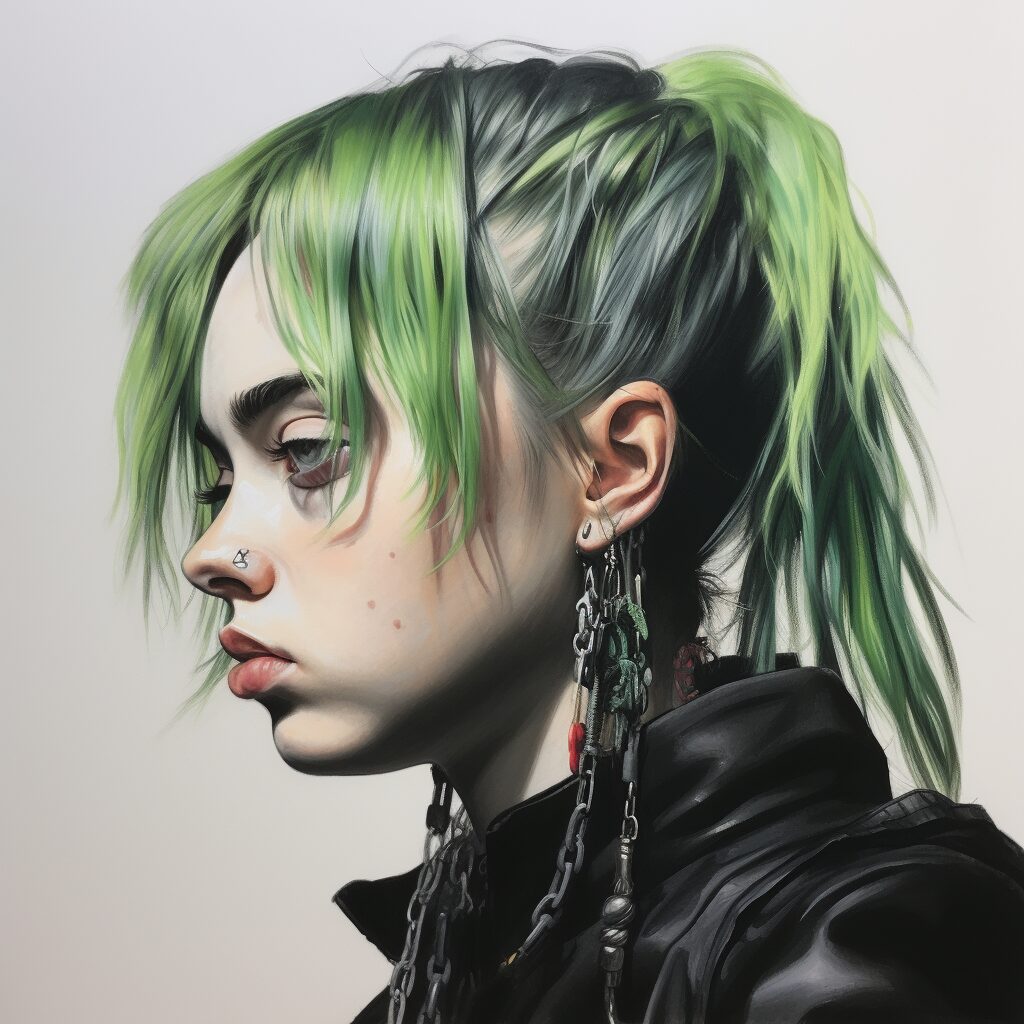 Billie Eilish, the enigmatic force in modern pop music, has redefined what it means to be a global superstar in today’s digital age. Emerging from the bedroom studio she shared with her brother Finneas, Eilish’s haunting vocals and avant-garde aesthetic quickly captivated listeners worldwide. Her rise to fame is a testament to the power of internet-driven music discovery, with tracks like ‘Ocean Eyes’ blossoming from SoundCloud sensations to mainstream hits. Billie’s style, characterized by its whispery intensity and emotional depth, challenges the traditional pop paradigm, inviting listeners into her introspective and often surreal world.
Billie Eilish, the enigmatic force in modern pop music, has redefined what it means to be a global superstar in today’s digital age. Emerging from the bedroom studio she shared with her brother Finneas, Eilish’s haunting vocals and avant-garde aesthetic quickly captivated listeners worldwide. Her rise to fame is a testament to the power of internet-driven music discovery, with tracks like ‘Ocean Eyes’ blossoming from SoundCloud sensations to mainstream hits. Billie’s style, characterized by its whispery intensity and emotional depth, challenges the traditional pop paradigm, inviting listeners into her introspective and often surreal world.
Eilish’s partnership with her brother Finneas, her primary collaborator and producer, has been pivotal in crafting her signature sound. Together, they’ve created a musical language that’s both innovative and introspective, blending elements of pop, electronic, and indie music. This collaboration has not only spotlighted Billie’s versatility as an artist but also underscored the importance of authentic, personal storytelling in music.
Beyond her sonic impact, Billie Eilish has become a symbol of Gen Z’s complex relationship with fame, mental health, and identity. Her candid discussions about depression, body image, and the pressures of fame resonate deeply with fans, making her not just a pop icon but a voice for a generation grappling with these critical issues.
Triumphs in Tune: “Bad Guy” Conquers the Charts
“Bad Guy” has captivated audiences and critics alike, amassing a collection of prestigious awards, including multiple Grammys. Its innovative sound and global chart dominance underscore Billie Eilish’s impact on the music industry and pop culture.
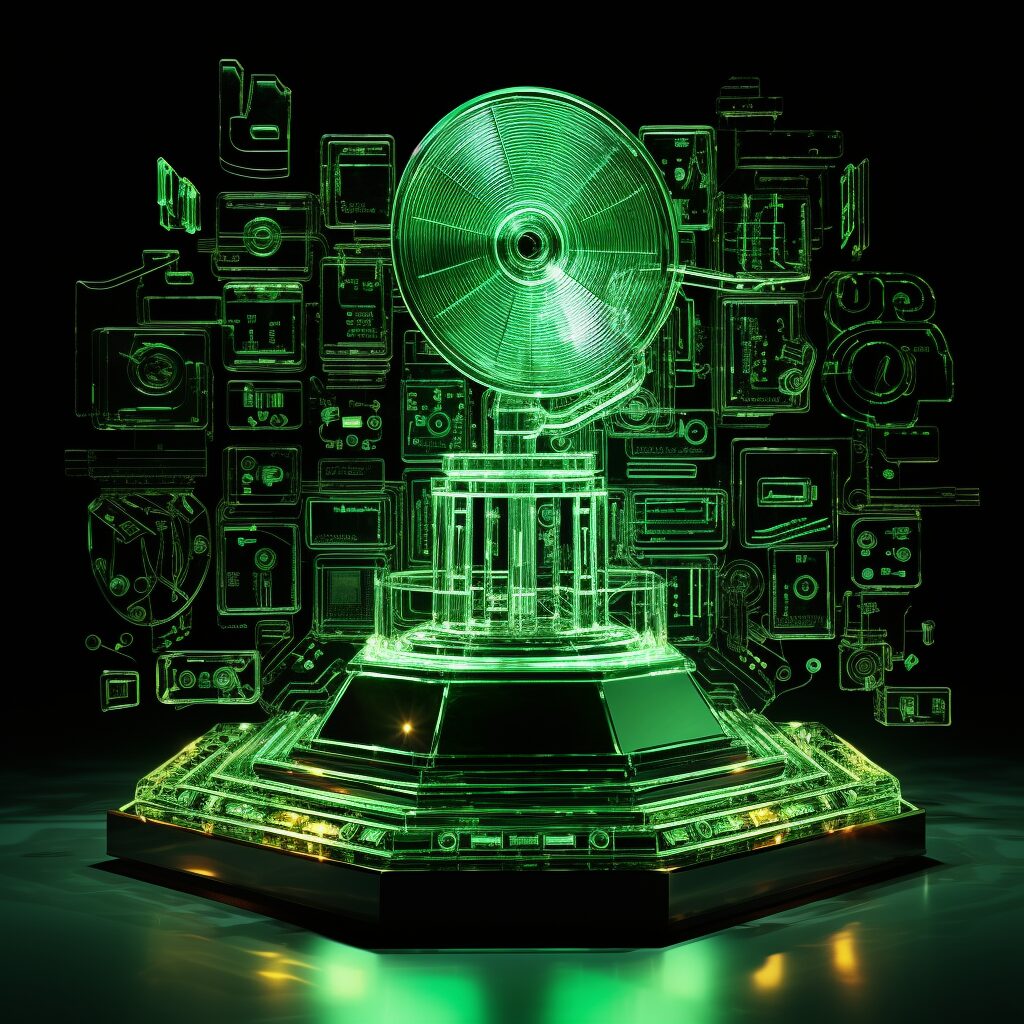 “Bad Guy” by Billie Eilish is not just a song; it’s a cultural phenomenon that has swept across awards ceremonies and music charts alike. Its edgy beats and subversive lyrics have earned it a place in the pantheon of pop music’s most celebrated tracks. At the 2020 Grammy Awards, “Bad Guy” triumphed, securing both Song of the Year and Record of the Year, marking a significant milestone in Eilish’s career. These accolades were not just a nod to the song’s widespread popularity but a recognition of its innovative approach to pop music.
“Bad Guy” by Billie Eilish is not just a song; it’s a cultural phenomenon that has swept across awards ceremonies and music charts alike. Its edgy beats and subversive lyrics have earned it a place in the pantheon of pop music’s most celebrated tracks. At the 2020 Grammy Awards, “Bad Guy” triumphed, securing both Song of the Year and Record of the Year, marking a significant milestone in Eilish’s career. These accolades were not just a nod to the song’s widespread popularity but a recognition of its innovative approach to pop music.
The song’s success story extended beyond the Grammys, resonating across the globe. “Bad Guy” clinched the top spot on charts in countries like Hungary, Australia, Canada, and Greece, showcasing its universal appeal. Its chart-topping journey is a testament to Billie Eilish’s global influence and the song’s ability to connect with audiences worldwide.
Beyond its commercial success, “Bad Guy” has been hailed as a groundbreaking track that challenges the conventions of pop music. Its accolades reflect the music industry’s acknowledgment of Billie Eilish’s unique artistry and the song’s role in shaping the future soundscape of pop. As “Bad Guy” continues to garner praise and recognition, its legacy is cemented as a defining moment in contemporary music history.
A Visual Manifesto: The Artistry of “Bad Guy
The “Bad Guy” music video is a masterclass in visual storytelling, perfectly encapsulating Billie Eilish’s unique blend of pop and dark aesthetics. Its playful yet eerie imagery challenges conventional narratives, making a bold statement on identity and perception.
 The “Bad Guy” music video is a vivid extension of Billie Eilish’s artistic vision, blending surreal imagery with a playful yet sinister undertone. Directed with a keen eye for the unconventional, the video mirrors the song’s themes of subverted expectations and the blurring of lines between the protagonist and antagonist roles. Billie’s performance is both engaging and enigmatic, wearing her now-iconic baggy, bright yellow outfit that starkly contrasts with the video’s darker elements.
The “Bad Guy” music video is a vivid extension of Billie Eilish’s artistic vision, blending surreal imagery with a playful yet sinister undertone. Directed with a keen eye for the unconventional, the video mirrors the song’s themes of subverted expectations and the blurring of lines between the protagonist and antagonist roles. Billie’s performance is both engaging and enigmatic, wearing her now-iconic baggy, bright yellow outfit that starkly contrasts with the video’s darker elements.
From the opening scene, where Billie smirks beside a bleeding nose, to the whimsical sequences of her dancing in empty, pastel-hued hallways, the video is a rollercoaster of visual metaphors. It masterfully juxtaposes the ordinary with the bizarre, such as Billie lounging on a man’s back as he does push-ups, symbolizing power dynamics and control. Each frame is meticulously crafted to challenge viewer perceptions, making the audience question the true meaning behind the “bad guy” persona.
The video’s climax, a sudden shift to a slower, more haunting melody, showcases Billie’s ability to command attention with minimalistic yet powerful imagery. This segment, featuring Billie in a dark, fluid-filled space, underscores the song’s deeper themes of identity and introspection, leaving a lasting impression on its viewers.
Climbing to the Apex: “Bad Guy’s” Chart-Topping Journey
“Bad Guy” by Billie Eilish captivated listeners worldwide, achieving number one on the Billboard Hot 100 and topping charts globally. Its success marks a pivotal moment in music, showcasing a shift towards more diverse and innovative sounds in pop.
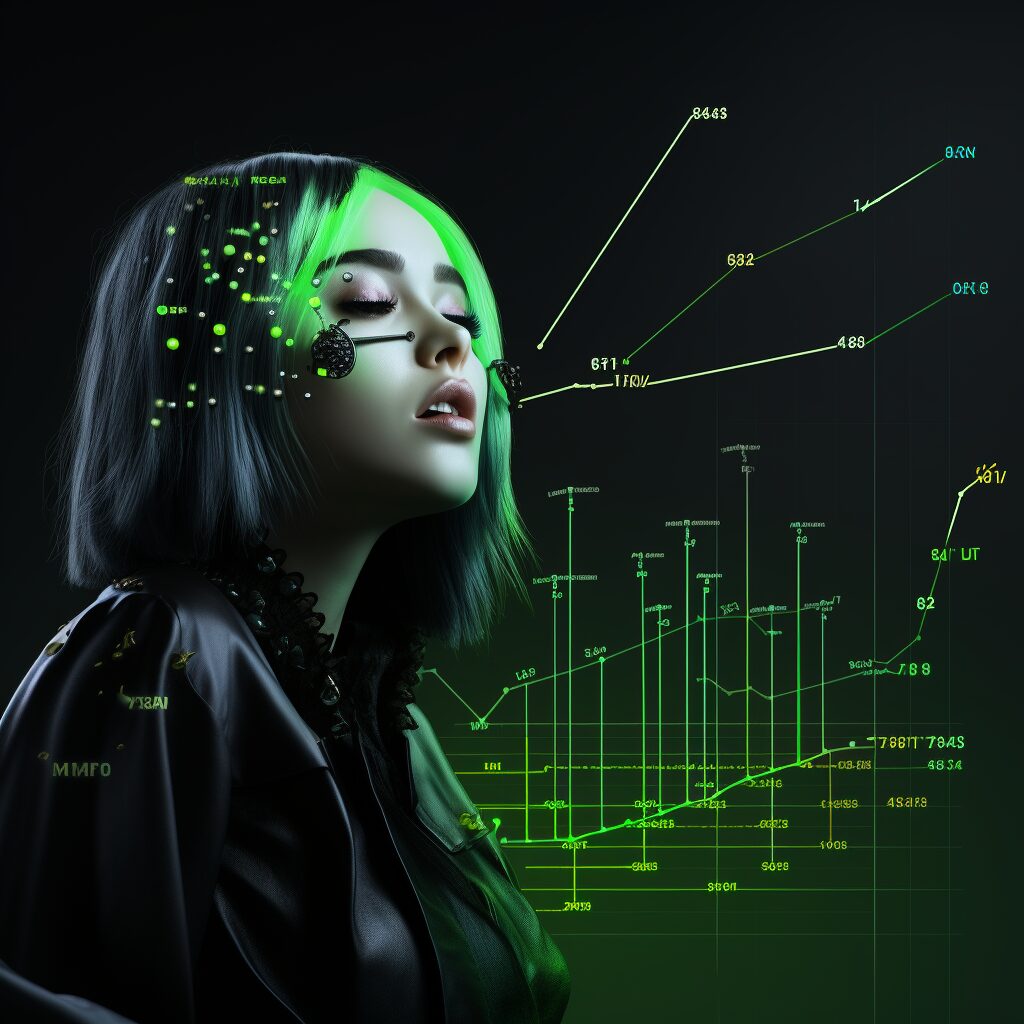 “Bad Guy” by Billie Eilish not only broke the mold of conventional pop music but also soared to the pinnacle of music charts worldwide, signaling a seismic shift in listener preferences. The song’s infectious beats and subversive lyrics resonated globally, propelling it to the number one spot on the Billboard Hot 100. This achievement was particularly noteworthy as it dethroned a long-standing chart leader, marking a changing of the guard in the pop music landscape.
“Bad Guy” by Billie Eilish not only broke the mold of conventional pop music but also soared to the pinnacle of music charts worldwide, signaling a seismic shift in listener preferences. The song’s infectious beats and subversive lyrics resonated globally, propelling it to the number one spot on the Billboard Hot 100. This achievement was particularly noteworthy as it dethroned a long-standing chart leader, marking a changing of the guard in the pop music landscape.
The track’s universal appeal was further evidenced by its top positions in charts across Hungary, Australia, Canada, and Greece, among other countries. This widespread acclaim highlighted the song’s unique ability to transcend cultural and geographical boundaries, connecting with a diverse array of listeners around the globe.
The chart success of “Bad Guy” is a testament to Billie Eilish’s innovative approach to music and her ability to tap into the zeitgeist of contemporary pop. The song’s ascent reflects a broader trend towards eclectic and genre-blending sounds in mainstream music, marking a significant moment in the industry’s evolution.
Sleepin’, you’re on your tippy toes
Creepin’ around like no one knows
Think you’re so criminalBruises on both my knees for you
Don’t say thank you or please
I do what I want when I’m wanting to
My soul, so cynical
So you’re a tough guy
Like it really rough guy
Just can’t get enough guy
Chest always so puffed guy
I’m that bad type
Make your mama sad type
Make your girlfriend mad tight
Might seduce your dad type
I’m the bad guy
Duh
I’m the bad guy
I like it when you take control
Even if you know that you don’t
Own me, I’ll let you play the role
I’ll be your animal
My mommy likes to sing along with me
But she won’t sing this song
If she reads all the lyrics
She’ll pity the men I know
So you’re a tough guy
Like it really rough guy
Just can’t get enough guy
Chest always so puffed guy
I’m that bad type
Make your mama sad type
Make your girlfriend mad tight
Might seduce your dad type
I’m the bad guy
Duh
I’m the bad guy
Duh
I’m only good at bein’ bad, bad
I like when you get mad
I guess I’m pretty glad that you’re alone
You said she’s scared of me?
I mean, I don’t see what she sees
But maybe it’s ’cause I’m wearing your cologne
I’m a bad guy
I’m-I’m a bad guy
Bad guy, bad guy
I’m a bad-
The Labyrinth of Words: Decoding “Bad Guy
“Bad Guy” stands out for its witty lyrics and subversive themes, challenging conventional notions of identity and power. Billie Eilish’s portrayal of the ‘bad guy’ persona offers a nuanced commentary on the performative aspects of social roles, encouraging a deeper exploration of self and society.
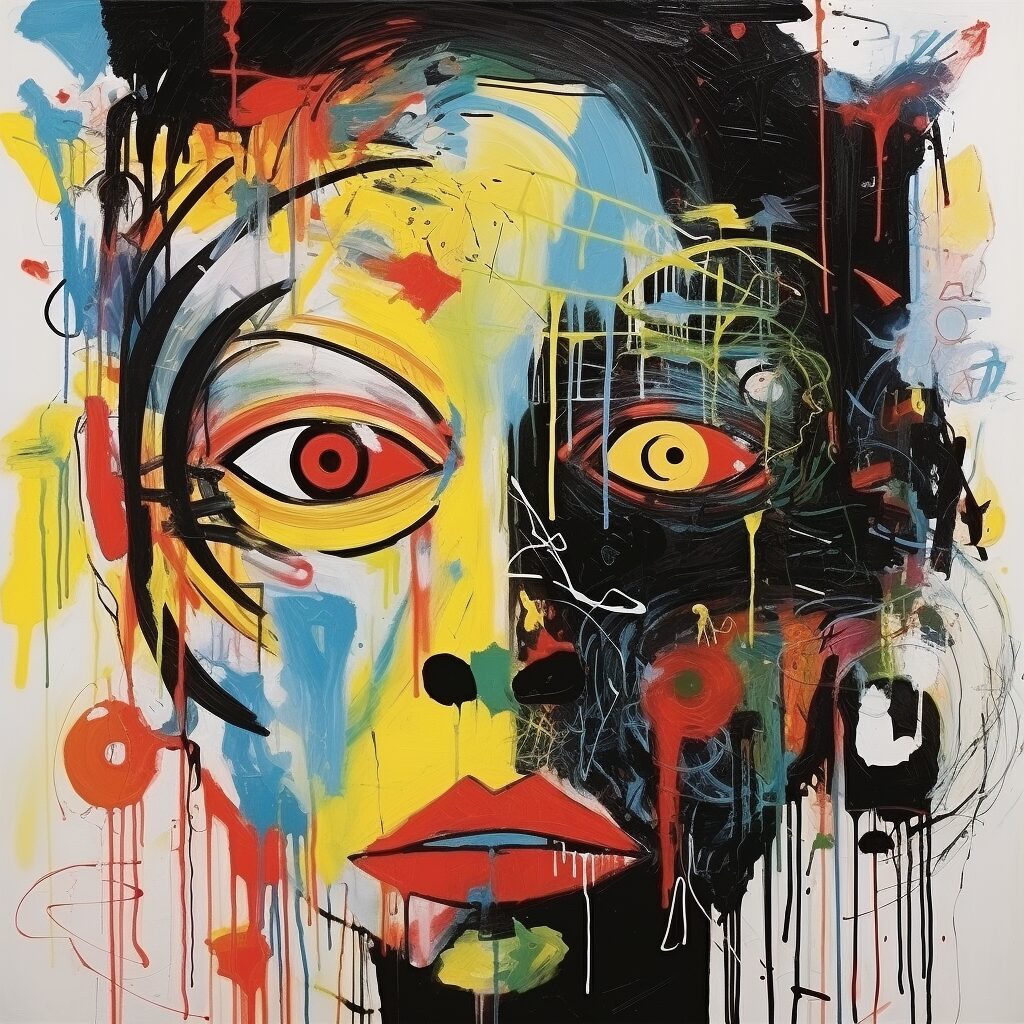 The lyrics of “Bad Guy” by Billie Eilish weave a complex narrative that delves into themes of identity, power dynamics, and the concept of the self as a performance. Eilish subverts traditional pop tropes by adopting the persona of the ‘bad guy,’ challenging listeners to question the authenticity of outward appearances. The song’s clever wordplay and ironic delivery underscore the performative nature of social roles, suggesting that the line between ‘good’ and ‘bad’ is often a matter of perspective.
The lyrics of “Bad Guy” by Billie Eilish weave a complex narrative that delves into themes of identity, power dynamics, and the concept of the self as a performance. Eilish subverts traditional pop tropes by adopting the persona of the ‘bad guy,’ challenging listeners to question the authenticity of outward appearances. The song’s clever wordplay and ironic delivery underscore the performative nature of social roles, suggesting that the line between ‘good’ and ‘bad’ is often a matter of perspective.
Through lines like “So you’re a tough guy, like it really rough guy,” Eilish plays with the expectations placed on masculinity and toughness, poking fun at the bravado often associated with these traits. The chorus, “I’m the bad guy, duh,” delivered with a mix of sarcasm and nonchalance, further highlights the song’s playful critique of stereotypical villainy and the allure of the anti-hero.
“Bad Guy” also explores the theme of control, with Eilish’s character asserting dominance in unconventional ways. This narrative twist not only serves to empower her persona but also comments on the fluid nature of power in relationships. By flipping the script on traditional pop narratives, Eilish invites listeners to reflect on their own identities and the facades they maintain in their lives.
Architectural Soundscapes: Unpacking “Bad Guy
“Bad Guy” stands out for its innovative structure and production, featuring a blend of minimalist beats, unique sound samples, and a dramatic tonal shift. This song structure reflects Billie Eilish’s creative approach to music, challenging traditional pop formats and engaging listeners with its complex soundscapes.
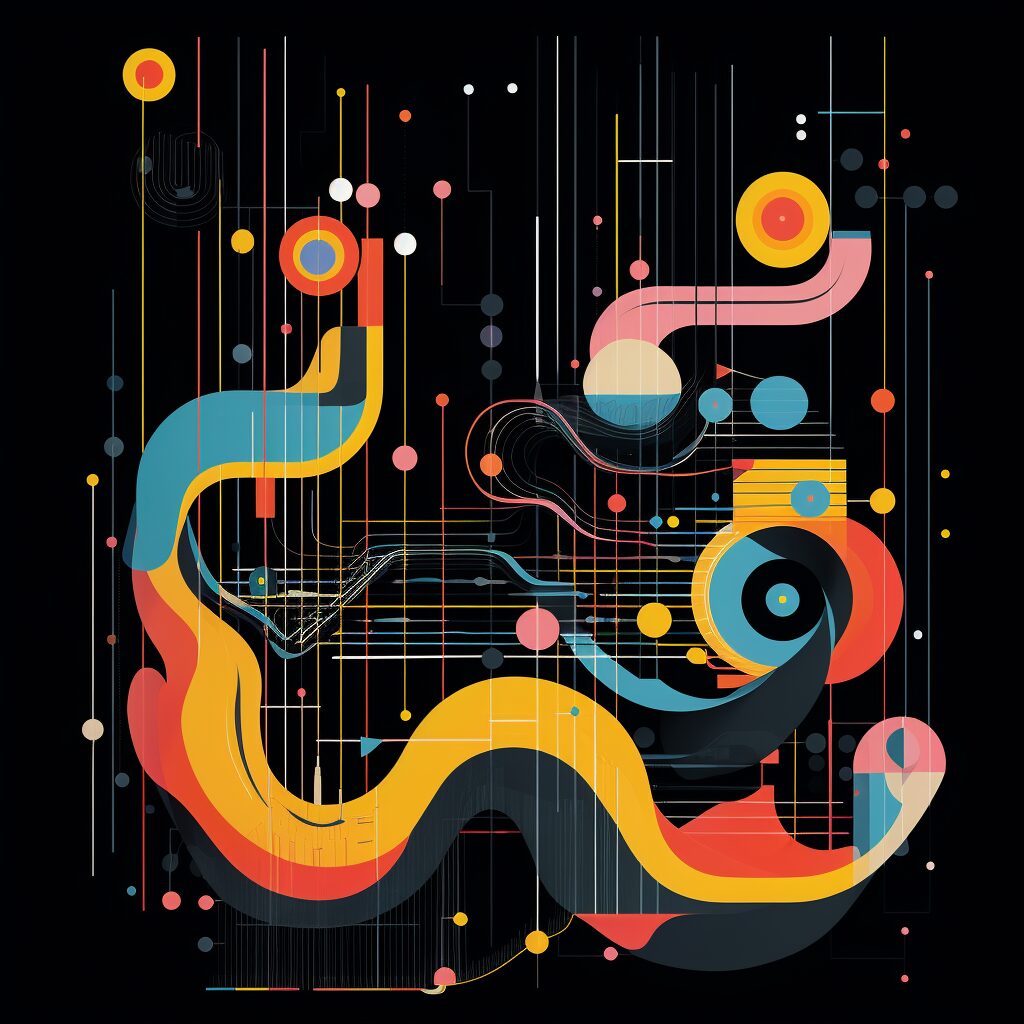 “Bad Guy” by Billie Eilish is a masterclass in musical innovation, characterized by its distinctive structure that defies pop conventions. The song’s architecture is built on a foundation of minimalist production, combining sparse instrumentation with a bass-heavy beat that underscores its edgy vibe. The use of unconventional sound samples, including pedestrian crossing signals and other everyday noises, adds a layer of texture and originality to the track, showcasing the creative genius of Eilish and her brother, Finneas O’Connell.
“Bad Guy” by Billie Eilish is a masterclass in musical innovation, characterized by its distinctive structure that defies pop conventions. The song’s architecture is built on a foundation of minimalist production, combining sparse instrumentation with a bass-heavy beat that underscores its edgy vibe. The use of unconventional sound samples, including pedestrian crossing signals and other everyday noises, adds a layer of texture and originality to the track, showcasing the creative genius of Eilish and her brother, Finneas O’Connell.
The song is divided into two contrasting halves, with the first part driven by a pulsating bassline and Eilish’s soft, whispery vocals that playfully flirt with the themes of the lyrics. The transition to the second half marks a dramatic shift in tone, slowing down to a haunting, ethereal melody that adds depth and complexity to the song’s narrative.
This structural duality not only highlights the song’s thematic exploration of identity and perception but also demonstrates Eilish’s ability to navigate and blend multiple genres. From pop to electronic to indie, “Bad Guy” is a sonic journey that captivates listeners with its bold experimentation and intricate soundscapes, making it a standout track in the contemporary music landscape.
The Maestro Behind the Music: Finneas O’Connell’s Sonic Alchemy
Finneas O’Connell, the creative force behind Billie Eilish’s success, is celebrated for his innovative production and songwriting. His work on “Bad Guy” showcases his unique approach to music, blending unconventional sounds with profound lyrical themes, solidifying his status as a visionary in the music industry.
 Finneas O’Connell, the architect of the soundscapes that have catapulted Billie Eilish to global stardom, is more than just a producer; he’s a musical visionary. His work on “Bad Guy” exemplifies his innovative approach to music production, characterized by a blend of minimalist beats, atmospheric textures, and unexpected sound samples. Finneas’s ability to craft intricate yet accessible music has redefined the boundaries of pop music, earning him acclaim in the music industry and a devoted following among listeners.
Finneas O’Connell, the architect of the soundscapes that have catapulted Billie Eilish to global stardom, is more than just a producer; he’s a musical visionary. His work on “Bad Guy” exemplifies his innovative approach to music production, characterized by a blend of minimalist beats, atmospheric textures, and unexpected sound samples. Finneas’s ability to craft intricate yet accessible music has redefined the boundaries of pop music, earning him acclaim in the music industry and a devoted following among listeners.
The collaboration between Finneas and his sister Billie Eilish transcends the conventional artist-producer relationship. Their symbiotic dynamic allows for an unparalleled depth of creativity and experimentation, evident in the nuanced layers and emotional resonance of their music. Finneas’s role in Billie’s artistic journey is pivotal; his keen ear for melody and rhythm, combined with a fearless approach to sonic exploration, has played a crucial role in shaping their distinctive sound.
Beyond “Bad Guy,” Finneas’s work spans a broad spectrum of music, from haunting ballads to upbeat anthems, each track a testament to his versatility and dedication to his craft. His commitment to authenticity and artistic integrity has not only propelled Billie Eilish to the forefront of the music scene but also established him as a formidable talent in his own right.
Dreamscapes and Nightmares: The World of “When We All Fall Asleep, Where Do We Go?
Billie Eilish’s debut album “When We All Fall Asleep, Where Do We Go?” is a masterful blend of dark pop and electronic music, exploring themes of mental health, dreams, and existential questions. The album’s innovative sound and haunting narrative have made it a landmark in contemporary music, redefining the boundaries of pop.
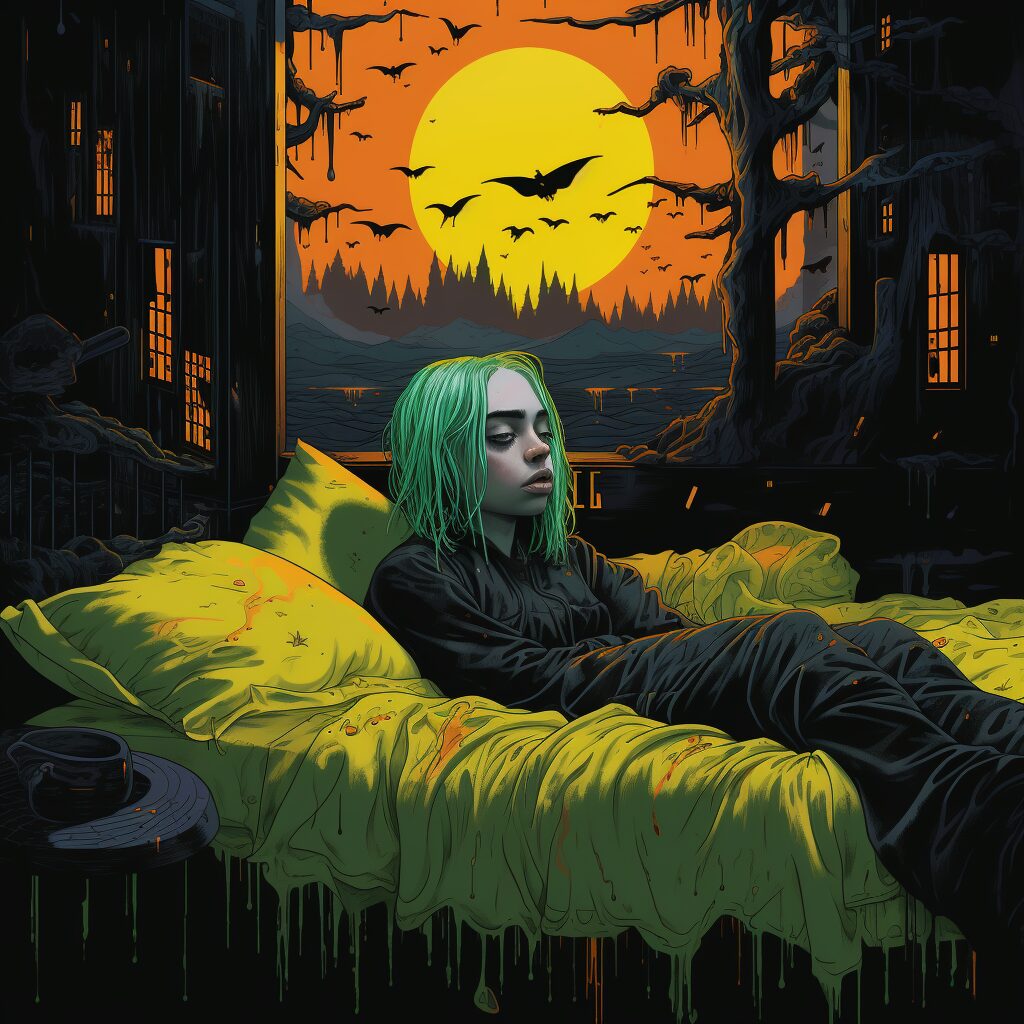 Billie Eilish’s debut studio album, “When We All Fall Asleep, Where Do We Go?” is a haunting journey into the depths of the subconscious, blending dark pop with avant-garde electronic music. Released in March 2019, the album is a bold exploration of themes such as mental health, existential dread, and the surreal landscapes of dreams. Eilish’s ethereal vocals, combined with Finneas O’Connell’s innovative production, create a soundscape that is both eerie and captivating, inviting listeners to delve into a world where the lines between wakefulness and sleep blur.
Billie Eilish’s debut studio album, “When We All Fall Asleep, Where Do We Go?” is a haunting journey into the depths of the subconscious, blending dark pop with avant-garde electronic music. Released in March 2019, the album is a bold exploration of themes such as mental health, existential dread, and the surreal landscapes of dreams. Eilish’s ethereal vocals, combined with Finneas O’Connell’s innovative production, create a soundscape that is both eerie and captivating, inviting listeners to delve into a world where the lines between wakefulness and sleep blur.
The album artwork, featuring Billie Eilish’s ghostly figure sitting on a bed in a dimly lit room, perfectly encapsulates the album’s themes of introspection and the unknown. Each track on the album contributes to the overarching narrative, weaving a complex tapestry of emotions and stories that challenge conventional pop music narratives. Songs like “bury a friend” and “bad guy” showcase Eilish’s ability to combine catchy melodies with unsettling lyrics, creating an immersive experience that resonates with listeners on a profound level.
“When We All Fall Asleep, Where Do We Go?” has received critical acclaim for its artistic daring and has solidified Billie Eilish’s position as one of the most innovative voices in contemporary music. The album’s commercial success, coupled with its impact on the music industry, marks a significant moment in pop culture, heralding the arrival of a new era of pop music that embraces complexity, depth, and emotional authenticity.
Echoes of a New Era: The Resounding Impact of “Bad Guy
“Bad Guy” has redefined pop music, blending dark themes with innovative sounds to create a global hit that transcends genres. Billie Eilish’s groundbreaking work on this track signifies a shift towards a more experimental and authentic era in music, leaving a lasting impact on pop culture and the music industry.
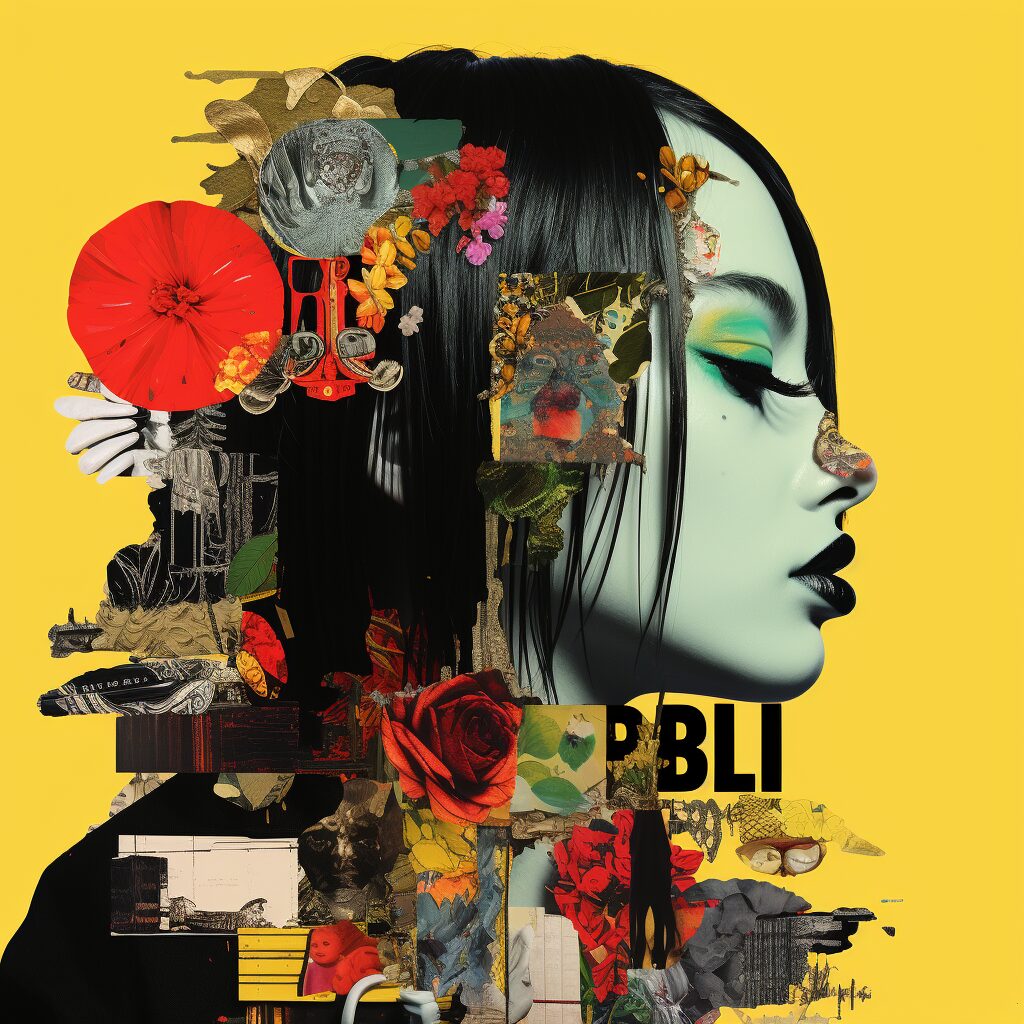 “Bad Guy” by Billie Eilish is more than just a song; it’s a cultural phenomenon that has left an indelible mark on the landscape of contemporary music. With its innovative blend of dark pop and electronic elements, the track has challenged and expanded the boundaries of what pop music can be. Billie Eilish, with her brother Finneas by her side, has crafted a sound that is both unique and unmistakably influential, resonating with listeners across the globe and paving the way for a new generation of artists.
“Bad Guy” by Billie Eilish is more than just a song; it’s a cultural phenomenon that has left an indelible mark on the landscape of contemporary music. With its innovative blend of dark pop and electronic elements, the track has challenged and expanded the boundaries of what pop music can be. Billie Eilish, with her brother Finneas by her side, has crafted a sound that is both unique and unmistakably influential, resonating with listeners across the globe and paving the way for a new generation of artists.
The song’s success is a testament to the power of authentic, boundary-pushing artistry in the digital age. “Bad Guy” has not only dominated charts and won prestigious awards, but it has also sparked conversations about identity, power, and the complexities of the human experience. Its impact extends beyond the music industry, influencing fashion, social media, and the broader cultural discourse.
As we reflect on the legacy of “Bad Guy,” it’s clear that Billie Eilish’s work will continue to inspire and challenge us for years to come. The song stands as a beacon of creativity and innovation in music, reminding us of the endless possibilities that arise when artists dare to explore uncharted territories.
Dive into the sonic world where pop meets audacity with #BillieEilish’s Bad Guy 🎶 A track that didn’t just climb the charts but reshaped them, proving that when it comes to music, it’s not just about the sound—it’s about the rebellion. 🖤✨ #MusicRevolution #BadGuyImpact

